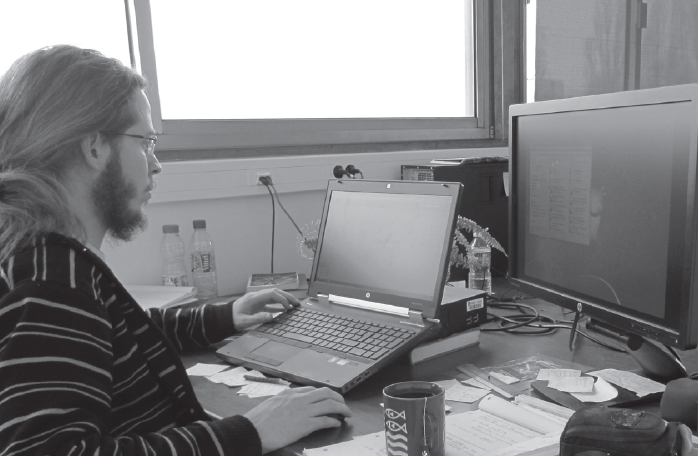ECOLOGY OF PLANT COMMUNITIES
Understanding natural habitats and their history to better preserve our plant heritage.
Doctoral school : RP2E — Sciences et Ingénierie Ressources Procédés Produits Environnement
Research topic : Forest-grassland interfaces as conservation tools for plant diversity in the context of land-use changes.
__________________________________________________________________________________________
Maxime Burst is a young researcher with with the Joint Research Unit for Forest Ecology and Ecophysiology (EEF) in Nancy. He works with the Forest Plant Ecology team whose focus is the geographical distribution of different plant species which constitute the natural habitats that surround us. Specifically, this team studies how changes in land-use can modify these habitats. How deforestation, for example, might affect a forest plant species common in Lorraine like lily of the valley. Or if grass species found in an old-growth forest will be the same as those found in a younger forest developed on an abandoned field.
“Nature represents a constant source of awe and inspiration for man. Not only the plant species that feed us, dress us, house us and even heal us, but the plants that surround us in our daily lives which are the source of so many innovations by developing our curiosity and creative imagination. Understanding their distribution in order to improve their preservation is one of the challenges that makes science truly exciting.”
The diversity and geographical distribution of the plants that constitute our plant heritage in forest, grassland and crop habitats so familiar to us are affected by land-use changes. Plants and other species today face a very real “housing crisis”, due in particular to urban sprawl and more intensive farming. And yet these plants have been developing for long periods of time to find suitable habitats! Maxime studies different plant species and concentrates particularly on those plants which are able to live in one sole habitat, or one location only. Their survival is inextricably linked to the existence and the maintenance of these fixed habitats over long periods of time. These species are known as habitat “specialists” — but these habitats, such as forests, are increasingly subjected to changes which are the direct result of human land-use.
Maxime’s research consists of creating maps to track land use on the regional level, specifically in Lorraine, to determine the ages of forest, grassland and agricultural crop habitats. These maps allow Maxime to study plant species distribution within these habitats subject to land-use changes, such as deforestation or afforestation*. Maxime’s research considers specifically the edges or interfaces between forests and grasslands where he takes a full inventory of existing plant species and records the characteristics of their particular habitats. Statistical analysis allows him to then determine why certain habitats “house” more plant species than others, and to identify which specific plant species are “specialists” for each habitat.
In future, his work could lead to improvements in how forests and grasslands are targeted for prioritized protection, by disseminating his results to natural habitat managers (for example: ONF**, PNRL***).
* Afforestation: The opposite of deforestation, this is the natural establishment of a forest or a stand of trees in an area where there was no forest, such as on grasslands or agricultural crops.
** ONF: National French Forestry Commission
*** PNRL: Regional National Park of Lorraine
Objectives / Applications —
- To understand the history of specific habitats and their influence on plant species distribution at the forest-grassland interface
- To assess the sustainability of plant species, particularly “specialists” of today’s forest and grassland habitats.



